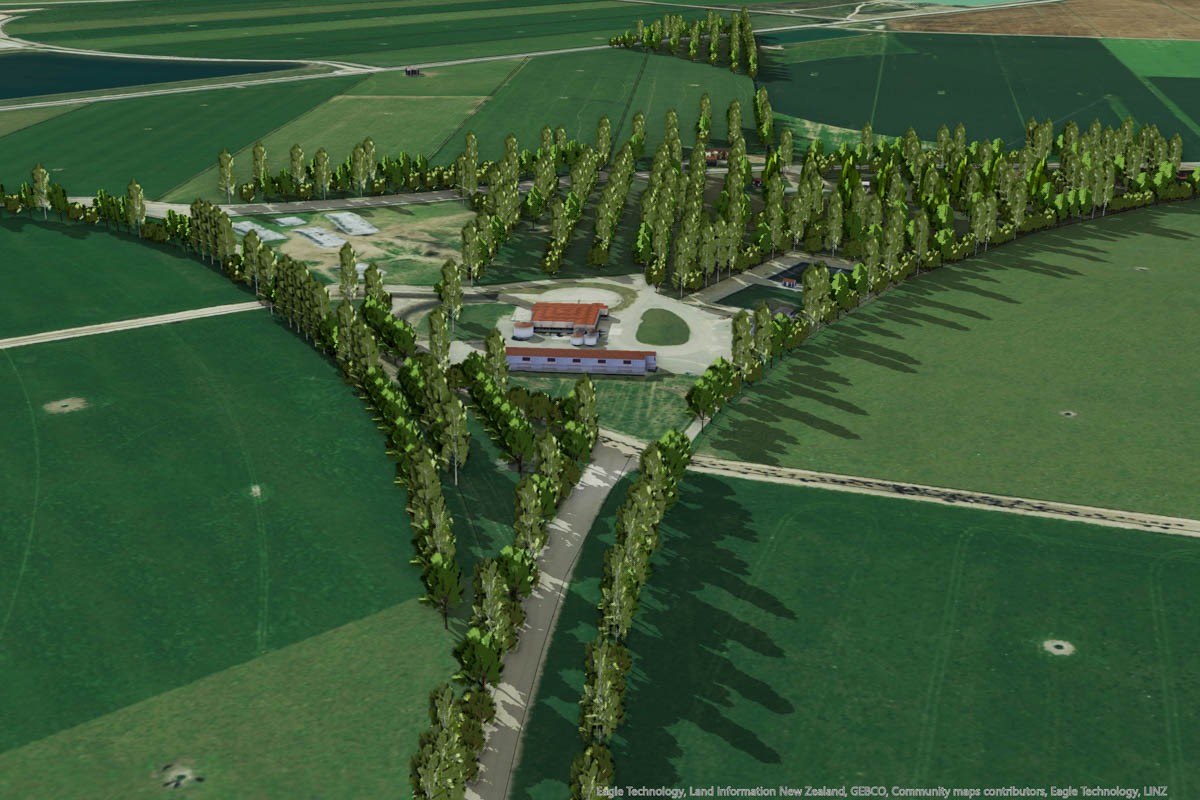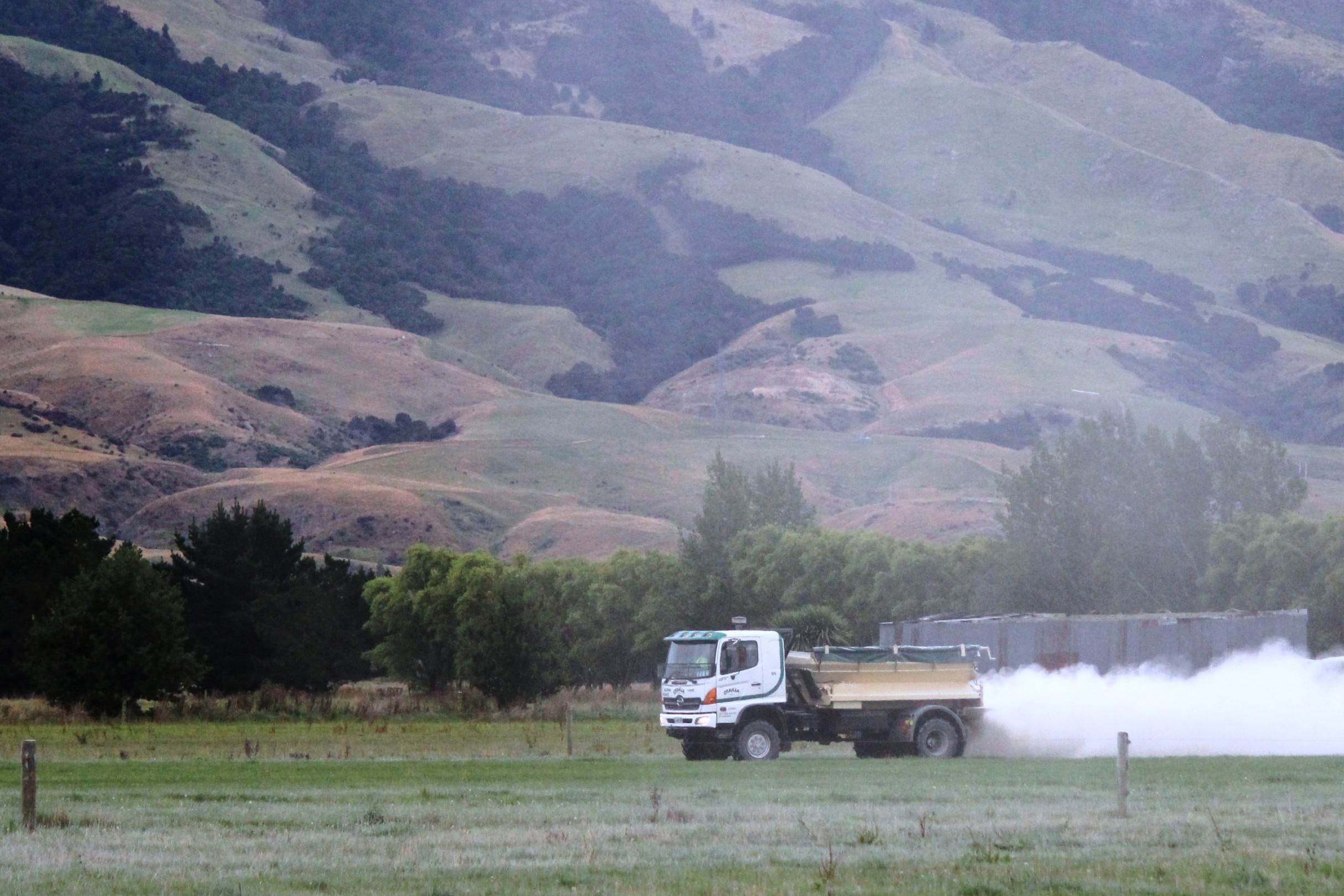The Kingans hope to overcome the rules on slope grazing. Story and photos by Karen Trebilcock.
 Callum and Twyla Kingan will continue intensive winter grazing (IWG) their dairy runoff near Oamaru even though the slopes on the limestone hill country easily break the 10-degree slope rule which comes into effect later this year. A SIDE workshop in early June visited the farm to see the Kingans’ dairy cows grazing fodder beet on a 25-degree slope.
Callum and Twyla Kingan will continue intensive winter grazing (IWG) their dairy runoff near Oamaru even though the slopes on the limestone hill country easily break the 10-degree slope rule which comes into effect later this year. A SIDE workshop in early June visited the farm to see the Kingans’ dairy cows grazing fodder beet on a 25-degree slope.
“We’re hoping to apply for a 10-year consent with Otago Regional Council for winter grazing the whole block and the cost of that spread over the 10 years will probably be the same as several bales of balage for the year,” Callum said.
“We need to be able to winter crop these slopes. It’s an integral part of our business which is why we’re going to pay the money and apply for the consent.”
Although the slope was steep, they were doing everything they could to mitigate issues.
Cows are grazed from the top down on the slope with a sheltered grass paddock at the top if the weather turned bad. Critical source areas such as drains and swales were uncropped and would be left in grass, as were the steeper faces.
Tillage at planting was across the slope instead of up and down to minimise soil movement if it rained heavily before the crop was established.
“Health and safety becomes an issue in the winter if it gets wet when taking a tractor up there.
“You can slip around a bit so we placed the balage and hay out in the autumn when it was dry,” Callum said.
The fodder beet where the balage was placed was lifted first and fed out.
“I actually worry more about winter grazing the flats at the bottom of the hills because if they get wet during winter, they stay wet while the hill dries out again quickly.”
As part of NOSLaM (North Otago Sustainable Land Management), Callum has been doing farm environment plans for 16 years so was used to filling out a winter grazing plan.
“I get my colouring pencils out. It’s just another admin job you’ve got to do.”
DairyNZ lead advisor solutions and development Justin Kitto said having a written plan showing how you were going to graze a winter crop area was now crucial if things went wrong.
“If you have it written down beforehand you can show you had reasonable intentions of what you wanted to do. It shows you’ve thought about it before you did it. “It can’t just be in your head any longer, it has to be written down.”
Winter crop grazing plans must show slope and grazing direction, the prevailing wind and shelter from it, critical source areas and buffer zones, gateways, water troughs both permanent and portable, balage placement and all fences including how break out fences and backing fences were to be used.
They should also show the transition plan for introducing the cows to crop, how cow health was to be monitored, feed budgets and how calving on the crop was prevented.
A plan in case of adverse weather and wet soil also had to be written down.
Justin said slopes could be measured using a slope app on a phone or by tying a piece of string to two fencing standards.
Regional councils were preparing to accept winter grazing consents earlier than government’s November 1 deadline as they recognised winter crop throughout the country would be planted by that date.
“I understand Otago Regional Council will have the application form on their website in the near future,” Justin said.
He said it was unlikely government would change the rules announced in late April.
“The feeling is they have conceded a lot already by taking out pugging and the date when crop paddocks had to be resown by.
“However, what government has decided upon is only the minimum standard. Regional councils can impose stricter rules on top of them if they think they’re needed.
“We don’t want those bad images from the past of cows standing in mud out there again.
“They were taken out of context but people overseas when they see them don’t know that and they question what we’re doing.”
The SIDE workshop also visited Peter Smit’s farm nearby where he is wintering 200 cows also on fodder beet but near his dairy.
“This used to be a border-dyked farm and there is a gradual slope towards the road and one year in five we do get a flood and water ends up sitting there at the bottom,” Peter said.
However, Justin pointed out the road drain was not a critical source area as it did not lead to a waterway. Peter was using a portable water trough with a 100m crop face. Large straw bales would be placed in the paddock if bad weather was on the way for shelter for the cows.
“We haven’t had snow in 10 years but it can happen and the prevailing wind can be pretty bad especially when its wet,” he said.
Because of the stony ground he was more concerned about nitrogen leaching than sediment loss and planned to plant an oat and annual ryegrass mix to replace the fodder beet when the cows finished each block, if the weather allowed it.
“We did that last year and it worked well and we ended up feeding it to the late calvers.”
Nitrogen leaching was the reason why he had chosen to plant fodder beet instead of kale and he had been heartened to hear how recent research shows the tap root of mature fodder beet reached down more than a metre absorbing nitrogen.
“The oats we grew last year following the fodder beet certainly looked nitrogen deficient, so it shows what we’re doing is working.”





